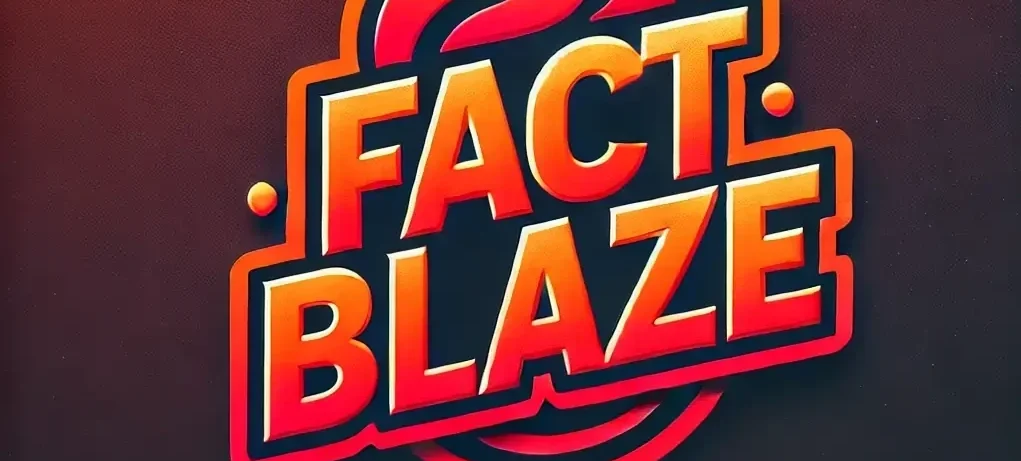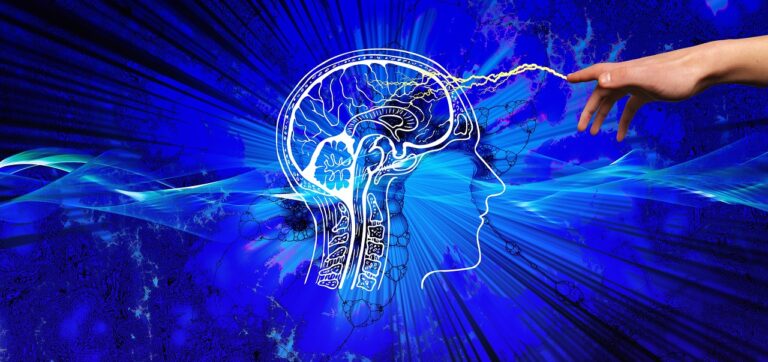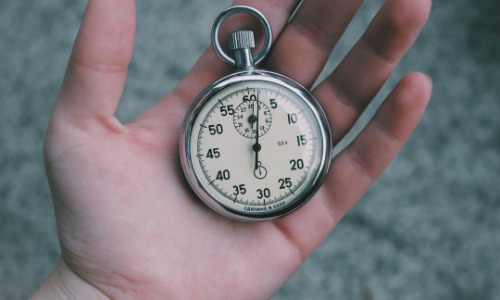21 Mind-Blowing Facts About DNA Latest Research 2025
Table of Contents
Toggle21 Mind-Blowing Facts About DNA That Will Change How You See Life! 🚀
Introduction: DNA—The Blueprint of Life!
Imagine if you could store all the knowledge of human history—every book, song, and scientific discovery—inside something smaller than a sugar cube. Sounds impossible? Well, DNA already does this for life itself!
DNA (deoxyribonucleic acid) is more than just a molecule—it’s a biological supercomputer, a forensic detective, and a genetic time machine. It holds secrets older than dinosaurs, stores data more efficiently than quantum computers, and has shaped the evolution of every living thing on Earth.
But why is DNA so important?
🔹 It defines your physical traits, from eye color to height.
🔹 It carries ancestral history, connecting you to humans from thousands of years ago.
🔹 It drives modern medicine, allowing scientists to cure genetic diseases.
🔹 It may one day unlock the secrets of aging, intelligence, and even space survival!
Ready to have your mind blown? Let’s dive into 21 DNA facts that will change the way you see life! 🚀
1️⃣ DNA Is More Than a Blueprint—It’s a Supercomputer of Life!
Most people think DNA is just an instruction manual for building the body—but it’s much more than that. DNA is like a biological supercomputer that continuously runs genetic programs.
🔹 A single DNA strand stores 215 petabytes of data—enough to hold all of Netflix’s content millions of times over!
🔹 Scientists have already encoded books, music, and images into DNA molecules.
🔹 Unlike hard drives that degrade, DNA can last thousands of years—scientists have extracted DNA from 50,000-year-old mammoths!
💡 Expert Insight: “DNA is nature’s most efficient storage medium. The ability to encode digital data in DNA could revolutionize the future of computing.”—Dr. George Church, Harvard Geneticist
📖 Further Reading: MIT Technology Review: The Future of DNA Storage
2️⃣ Humans Share 99.9% of DNA—So Why Do We Look Different?
It’s mind-blowing, but all humans are 99.9% genetically identical! The tiny 0.1% difference is what makes each of us unique.
🔹 This 0.1% variation determines your eye color, height, metabolism, and disease risks.
🔹 Some people have gene mutations that make them immune to HIV, resistant to Alzheimer’s, or naturally stronger.
🔹 Even identical twins’ DNA changes over time due to epigenetics—the way genes turn on and off due to environment and lifestyle.
💡 Expert Insight: “Your DNA is not your destiny—your environment plays a huge role in shaping how your genes behave.” —Dr. Nessa Carey, Epigenetics Researcher
📖 Further Reading: Harvard University: The Role of Genetic Variation in Human Traits
3️⃣ Some People Have Two Sets of DNA! 🧬👥 (Human Chimerism)
Imagine taking a DNA test and discovering that parts of your body don’t match your own DNA! Sounds like science fiction? It’s real—and it’s called chimerism.
🔹 Chimeras absorb DNA from a twin in the womb, meaning they have two genetic identities.
🔹 Some chimeras have two different blood types, patches of different skin tones, or even a second set of reproductive organs!
🔹 In rare cases, mothers have given birth to children who don’t match their own DNA—because the baby’s genes came from a twin that the mother absorbed!
💡 Expert Insight: “Some people are unknowingly living with two genetic identities—it’s one of the most fascinating genetic mysteries.” —Dr. Lydia Fairchild, Geneticist
📖 Further Reading: Harvard Medical Research: The Science of Chimerism
4️⃣ Viruses Have Left Their Mark on Your DNA! 🦠🔬
Did you know that 8% of your DNA isn’t human? It comes from ancient viruses that infected our ancestors millions of years ago!
🔹 These fossil viruses are still in your DNA—and some even protect you from diseases!
🔹 One viral gene helped evolve the placenta, allowing mammals to have live births instead of laying eggs.
🔹 Some scientists believe dormant viral genes may be linked to autoimmune diseases and cancer.
💡 Expert Insight: “Your genome is like a museum of ancient viral infections. Some of these genes are still active today, shaping how our immune system fights diseases.”—Dr. David Baltimore, Nobel Prize-winning Virologist
📖 Further Reading: NIH: How Viruses Became Part of Human DNA
💡 Next Section Preview: Coming up next—
🔹 Can DNA really survive in space? 🚀
🔹 Why are scientists trying to bring back extinct animals using DNA? 🦣
🔹 The shocking discovery of “Dark DNA”—the genetic code that scientists can’t explain! 🌑
5️⃣ DNA Can Survive in Space! 🚀🛰️
Imagine launching DNA into the vacuum of space, exposing it to deadly radiation, extreme temperatures, and zero gravity—yet it still survives! Sounds impossible? Scientists have already proven it.
🔹 In 2014, the European Space Agency (ESA) coated DNA onto a rocket and launched it into space. When the rocket returned, the DNA was still functional!
🔹 Why does DNA survive? The double-helix structure protects its molecules, allowing it to withstand extreme conditions better than other biological materials.
🔹 This supports the theory of panspermia—the idea that life might have originated elsewhere in the universe and traveled to Earth on asteroids or comets!
💡 Expert Insight: “If DNA can survive in space, it raises a big question—did life on Earth originally come from another planet?” —Dr. Francis Westall, Astrobiologist
📖 Further Reading: NASA Astrobiology Institute – The Possibility of DNA Surviving Space Travel
6️⃣ Scientists Are Trying to Bring Back Extinct Animals! 🦣🔬
What if we could see woolly mammoths walking the Earth again? Scientists are using DNA to bring back extinct species in a groundbreaking process called de-extinction.
🔹 How does it work? Scientists extract ancient DNA from frozen mammoths and insert it into elephant embryos, hoping to create a modern version of the species.
🔹 Other de-extinction projects aim to revive the dodo bird, saber-toothed cats, and even Neanderthals!
🔹 However, ethical concerns arise: If we bring back extinct species, will they be able to survive in today’s world?
💡 Expert Insight: “De-extinction is no longer science fiction. If we succeed, we could restore entire ecosystems by reintroducing lost species.”—Dr. George Church, Harvard Geneticist
📖 Further Reading: National Geographic – The Science of De-Extinction
7️⃣ There’s a Secret “Dark DNA” That Scientists Can’t Fully Explain! 🌑
What if there were hidden sections of DNA that modern science can’t detect? That’s exactly what “Dark DNA” is—a genetic mystery that defies traditional sequencing methods.
🔹 Some species, like the sand rat, have entire genes that should be missing, but somehow they still function.
🔹 Researchers believe Dark DNA might contain undiscovered genes that could explain why some animals evolve faster than others.
🔹 This could mean that humans also have hidden genetic instructions waiting to be discovered!
💡 Expert Insight: “Dark DNA challenges everything we thought we knew about genetics. It’s like discovering an entirely new dimension of the genome.”—Dr. Adam Hargreaves, Evolutionary Biologist
📖 Further Reading: Nature Genetics – The Mystery of Dark DNA
8️⃣ DNA Can Act Like a Biological Clock to Determine Age! ⏳🧬
Can scientists tell how old you really are just by looking at your DNA? Yes! Your biological age may be different from your actual age—and it all depends on DNA methylation.
🔹 What is DNA methylation? It’s a chemical process that adds tags to your DNA, turning genes on and off over time.
🔹 Scientists have developed DNA “clocks” that predict biological age with 95% accuracy.
🔹 This research is revolutionizing forensic science—police can now estimate a suspect’s age from DNA left at a crime scene!
💡 Expert Insight: “DNA methylation patterns provide a highly accurate way to measure biological aging—and may even help us reverse it one day.” —Dr. Steve Horvath, Geneticist & Aging Researcher
📖 Further Reading: Cell Journal – How DNA Methylation Measures Aging
💡 Next Section Preview: Coming up next—
🔹 How scientists are using DNA to store music, art, and literature! 🎼📜
🔹 How forensic DNA technology is solving centuries-old crimes! 🕵️♂️🔬
🔹 Can DNA really predict your intelligence and personality? 🧠
9️⃣ DNA Can Store More Data Than Any Computer! 💾📀
Imagine a world where every book, movie, and scientific discovery could be stored inside a molecule smaller than a grain of rice. That’s the power of DNA data storage—the most efficient storage medium ever discovered!
🔹 DNA can store 215 petabytes of data in a single gram, meaning we could fit all the world’s data inside a shoebox.
🔹 Unlike hard drives that degrade, DNA can last for thousands of years—scientists have recovered perfectly preserved DNA from 700,000-year-old fossils!
🔹 In 2017, researchers at Harvard University successfully encoded an entire movie, operating system, and book into DNA, retrieving it with 100% accuracy.
🔹 How does it work?
Instead of using binary code (1s and 0s), DNA stores data using four chemical bases (A, T, C, G), which can be sequenced and read like a hard drive.
💡 Expert Insight: “DNA is nature’s most powerful storage medium. In the future, we may be able to store all human knowledge in a single droplet of DNA.”—Dr. George Church, Harvard Geneticist
📖 Further Reading: MIT Technology Review – DNA as the Future of Data Storage
🔟 Your DNA Can Predict How Long You’ll Live! ⏳
Can your genetic code predict how long you will live? Scientists say yes—your telomeres, the protective caps on your chromosomes, act like a biological clock that determines your aging process.
🔹 What are telomeres? They are DNA sequences at the ends of chromosomes that prevent genetic damage.
🔹 Why do they matter? Every time your cells divide, telomeres shorten. Once they become too short, the cell stops dividing and dies, leading to aging.
🔹 People with naturally longer telomeres tend to live longer, while shorter telomeres are linked to heart disease, cancer, and Alzheimer’s.
🔹 Can we stop aging?
Scientists are experimenting with telomerase, an enzyme that prevents telomere shortening. Some believe it could slow down or even reverse aging!
💡 Expert Insight: “Telomeres are like the body’s countdown clock. The longer they are, the longer your cells can keep dividing—potentially extending lifespan.”—Dr. Elizabeth Blackburn, Nobel Prize-Winning Scientist
📖 Further Reading: Nature Medicine – How Telomeres Control Aging
1️⃣1️⃣ Scientists Are Using DNA to Store Music, Art, and Literature! 🎼📜
Imagine listening to Beethoven’s symphonies or Shakespeare’s sonnets stored inside a single molecule of DNA! Scientists have already proven that DNA can be used to store music, literature, and art—potentially replacing hard drives, CDs, and cloud storage.
🔹 In 2012, researchers at Harvard University encoded a book and a music file into DNA.
🔹 In 2017, scientists at ETH Zurich stored an entire jazz album inside DNA and retrieved it with zero errors.
🔹 Since DNA doesn’t degrade over time, it could be the ultimate long-term storage solution for preserving history and culture.
🔹 Could DNA replace hard drives?
Yes! DNA doesn’t require electricity, can store exabytes of data, and is ultra-durable—unlike traditional storage, which wears out after decades.
💡 Expert Insight: “DNA storage will change the future of computing—imagine carrying an entire library inside a single molecule.”—Dr. George Church, Harvard Geneticist
📖 Further Reading: Science Journal – DNA as the Future of Data Storage
1️⃣2️⃣ DNA Can Be Used to Reconstruct the Faces of Ancient Humans! 🏺🧬
What if we could recreate the faces of humans who lived 50,000 years ago—just from their DNA? Scientists can now do exactly that!
🔹 How does it work?
By analyzing genetic markers for skin tone, hair color, and facial structure, scientists can digitally reconstruct faces of ancient people with 90% accuracy.
🔹 In 2018, researchers reconstructed the face of Cheddar Man, a 10,000-year-old skeleton found in England, revealing he had dark skin and blue eyes!
🔹 Scientists have also reconstructed the faces of Neanderthals, Denisovans, and even Ötzi the Iceman—a 5,300-year-old mummy found in the Alps.
🔹 How is this used today?
Forensic experts use DNA-based facial reconstruction to solve centuries-old crimes, identify unknown skeletons, and even reveal the genetic history of ancient civilizations.
💡 Expert Insight: “DNA is the ultimate forensic tool. We can now bring the past to life in ways never before imagined.”—Dr. Carles Lalueza-Fox, Paleogeneticist
📖 Further Reading: National Geographic – DNA Reconstruction of Ancient Faces
💡 Next Section Preview: Coming up next—
🔹 Can DNA really predict your intelligence and personality? 🧠
🔹 Why do some genes “switch off” randomly? 🧬🔄
🔹 How DNA could help humans live on Mars! 🚀
1️⃣3️⃣ Can DNA Predict Intelligence and Personality? 🧠
Could a DNA test reveal your IQ, creativity, or risk-taking behavior? Scientists believe that genes play a significant role in shaping intelligence and personality, but it’s more complicated than we once thought.
🔹 Is intelligence genetic?
- Studies suggest that 50-80% of intelligence is inherited, but environment, nutrition, and education also play crucial roles.
- The CHRM2 and IGF2R genes have been linked to higher cognitive abilities.
- The Genetics of Educational Attainment Project found over 1,000 genes linked to intelligence, but no single “IQ gene.”
🔹 Personality and DNA
- Your DNA may influence your temperament, risk-taking behavior, and even mental health disorders.
- The DRD4 gene, known as the “adventure gene,” is linked to thrill-seeking and wanderlust.
- The 5-HTTLPR gene may influence emotional resilience and anxiety levels.
🔹 But Can DNA Really Predict Who You’ll Become?
- While DNA sets the foundation, life experiences shape your intelligence and personality just as much.
- Even identical twins, who have 100% the same DNA, can have very different personalities due to environmental factors.
💡 Expert Insight: “Genes don’t determine destiny. Intelligence and personality are shaped by a complex mix of DNA, experiences, and education.” —Dr. Robert Plomin, Behavioral Geneticist
📖 Further Reading: Psychology Today – The Genetics of Intelligence and Personality
1️⃣4️⃣ Some Genes Can “Switch Off” for No Apparent Reason! 🧬🔄
Did you know that some of your genes might be “switched off” without you even knowing it? This is due to epigenetics, a process where genes are turned on or off based on lifestyle, environment, and even stress.
🔹 How does gene switching work?
- DNA doesn’t just dictate traits—it’s constantly being regulated by chemical tags called methyl groups.
- These epigenetic tags decide which genes are active and which remain silent.
- This is why identical twins can look different or develop different health conditions as they age.
🔹 What can turn genes on/off?
- Stress and trauma: Studies show that extreme stress can silence genes related to emotional resilience.
- Diet and exercise: Some foods can reactivate longevity genes, potentially extending lifespan.
- Pollution and toxins: Exposure to harmful chemicals can turn off tumor-suppressing genes, increasing cancer risk.
🔹 Could We “Turn On” Superhuman Abilities?
- Scientists are now testing whether we can reactivate dormant genes that could enhance muscle growth, brain function, or disease resistance.
- The FOXO3 gene, linked to extra-long lifespan, is inactive in most people—but researchers are exploring ways to switch it back on.
💡 Expert Insight: “Our genes are like piano keys—life plays the melody by turning them on and off.”—Dr. Manolis Kellis, MIT Geneticist
📖 Further Reading: Cell Journal – How Gene Silencing Works
1️⃣5️⃣ Could DNA Help Humans Live on Mars? 🚀🌌
As NASA and SpaceX prepare for missions to Mars, scientists are investigating whether we need to alter human DNA to survive on other planets.
🔹 The Challenges of Space Travel
- Space radiation damages DNA and increases cancer risk.
- Low gravity weakens bones and muscles over time.
- Mars lacks a protective atmosphere, making survival difficult without genetic adaptations.
🔹 Can We Edit DNA to Survive Space?
- Scientists are testing CRISPR gene editing to enhance DNA repair mechanisms.
- The p53 gene, which helps repair damaged DNA, could be modified to resist radiation.
- Some bacteria on Earth naturally survive radiation exposure—could we transfer these traits to human DNA?
🔹 The Future: Bioengineered Astronauts?
- Future astronauts might have genetic enhancements that make them more resistant to radiation, cold, and even longer lifespans.
- NASA has already studied Scott Kelly, an astronaut who spent a year in space, and found that his genes changed after returning to Earth!
💡 Expert Insight: “If we ever hope to colonize Mars, we may need to edit our DNA to adapt to its harsh environment.”—Dr. Christopher Mason, NASA Geneticist
📖 Further Reading: NASA – The Genetics of Space Travel
1️⃣6️⃣ Scientists Are Designing “Superhumans” Using DNA! 🦸♂️🧬
What if we could use DNA editing to create stronger, smarter, and disease-resistant humans? Scientists are already working on it!
🔹 The Rise of “Designer Babies”
- CRISPR technology allows editing of human embryos to remove genetic diseases like sickle cell anemia.
- Some believe we may eventually select traits like intelligence, muscle mass, or even lifespan before birth.
🔹 Can We Create Real-Life Superhumans?
- Some humans already have “super genes” that make them immune to diseases or give them extra strength.
- The LRP5 gene mutation makes bones nearly unbreakable.
- The EPO receptor gene mutation gives certain people extra oxygen in their blood, enhancing athletic performance.
🔹 Ethical Concerns
- Should we allow genetic enhancements for intelligence and strength?
- Could this lead to a divide between genetically enhanced humans and natural-born humans?
- Some countries, like China, have already experimented with gene-edited embryos, sparking debates over bioethics.
💡 Expert Insight: “We are entering an era where we will have the ability to rewrite the genetic code of humanity. The question is—should we?” —Dr. Jennifer Doudna, CRISPR Pioneer & Nobel Laureate
📖 Further Reading: Nature – The Ethics of Human Gene Editing
💡 Next Section Preview: Coming up next—
🔹 How DNA helped solve crimes from centuries ago! 🕵️♂️
🔹 How ancient viruses are embedded in your DNA! 🦠
🔹 Can DNA technology bring back lost memories? 🧠
1️⃣7️⃣ DNA Is Solving Centuries-Old Crimes! 🕵️♂️🔬
Did you know that DNA technology is solving “cold cases” from centuries ago? By extracting genetic material from ancient remains, old crime scene evidence, and historical artifacts, forensic scientists are rewriting history and solving long-forgotten crimes.
🔹 How does forensic DNA work?
- DNA from bones, hair, and teeth can last for thousands of years, allowing scientists to identify remains decades or even centuries later.
- The Y-chromosome and mitochondrial DNA (passed down from mothers) help trace family lineages.
- The CODIS DNA database compares DNA profiles to solve modern and historic crimes.
🔹 Famous cases solved using DNA:
- Jack the Ripper (1888): DNA from a victim’s shawl matched a known suspect’s descendants, identifying Aaron Kosminski as the most likely killer.
- The Golden State Killer (1970s-80s): Investigators used ancestry DNA databases to track down the suspect 40 years after his crimes.
- The Romanov Family (1918): DNA confirmed the identities of Russia’s last royal family, proving that none survived their execution.
💡 Expert Insight: “DNA technology is the greatest breakthrough in forensic science—every molecule holds the power to rewrite history.”—Dr. Henry Lee, Forensic Scientist
📖 Further Reading: FBI – How DNA Databases Solve Cold Cases
1️⃣8️⃣ Your DNA Contains “Ghost Genes” From Ancient Viruses! 🦠🧬
Did you know that 8% of your DNA isn’t human? It comes from ancient viruses that infected our ancestors millions of years ago! These viral genes, called endogenous retroviruses (ERVs), were passed down for generations—and some are still active in our bodies today.
🔹 How did viruses become part of our DNA?
- When ancient viruses infected early humans, some inserted their genetic material into sperm or egg cells, permanently embedding themselves in our DNA.
- Over time, these viral genes were inherited by offspring—and eventually, by all modern humans.
🔹 Are viral genes dangerous?
- Some viral genes helped human evolution—one even played a role in forming the placenta, making live birth possible!
- Others are linked to diseases like multiple sclerosis, cancer, and schizophrenia when they “reactivate.”
🔹 Can these ancient viruses be reawakened?
- Scientists are investigating whether dormant viral DNA could be triggered by environmental factors—potentially leading to new treatments or risks.
💡 Expert Insight: “Some of the oldest parts of your DNA came from ancient viruses that infected our ancestors. Without them, human evolution might have taken a completely different path.”—Dr. David Baltimore, Nobel Prize-Winning Virologist
📖 Further Reading: National Institutes of Health (NIH) – How Viruses Became Part of Human DNA
1️⃣9️⃣ Scientists Are Using DNA to Bring Back Lost Memories! 🧠
Could your forgotten childhood memories be restored using DNA technology? Recent research suggests that memories may be stored in the chemical structure of DNA, and scientists are exploring ways to recover or even transfer them.
🔹 How does memory encoding work?
- The brain stores experiences in neural networks, but recent studies suggest that epigenetic markers in DNA may also play a role.
- Specific chemical modifications, like DNA methylation, influence how memories are formed and retrieved.
- In animal studies, scientists have reactivated “lost” memories by altering DNA methylation patterns!
🔹 Could we transfer memories between people?
- Some experiments suggest that memory-related chemical markers could be implanted into another brain—a concept explored in sci-fi but now tested in lab settings.
- Future research could lead to memory-enhancing treatments for Alzheimer’s and PTSD patients.
🔹 Could DNA hold the key to immortality?
- If scientists decode how memories are stored in DNA, it might be possible to digitally back up human consciousness, preserving a person’s mind beyond their physical lifespan!
💡 Expert Insight: “DNA is more than a blueprint for the body—it might also store elements of our consciousness. If we unlock this mystery, we could revolutionize how we understand memory, identity, and human experience.”—Dr. Steve Ramirez, Harvard Neuroscientist
📖 Further Reading: Nature Neuroscience – The Role of Epigenetics in Memory Storage
2️⃣0️⃣ DNA May Hold the Secret to “Hacking” Human Evolution! 🔄🧬
For most of history, evolution has been a slow process—but thanks to DNA technology, we may be entering an era where humans can speed up and control their own evolution.
🔹 How does evolution work?
- Traditional evolution occurs through random mutations and natural selection over thousands of years.
- Scientists now believe that epigenetic changes—which happen within a lifetime—can be passed down, accelerating evolution.
🔹 Can we “hack” evolution?
- Gene editing technologies like CRISPR allow humans to modify DNA in real-time, skipping generations of natural adaptation.
- Some researchers are working on genetic upgrades to make humans immune to diseases, stronger, or even more intelligent.
🔹 Ethical concerns of engineered evolution:
- Could genetic enhancements create a divide between “edited” and “natural” humans?
- Should we use genetic technology to eliminate genetic disorders, or would that interfere with nature?
- If we modify human DNA to survive extreme environments, would future generations be considered a new species?
💡 Expert Insight: “For the first time in history, we have the power to control evolution. The question is no longer ‘Can we?’ but ‘Should we?’” —Dr. Jennifer Doudna, CRISPR Pioneer & Nobel Laureate
📖 Further Reading: Nature – The Ethics of Human Gene Editing
💡 Next Section Preview: Coming up next—
🔹 Could DNA technology make humans immortal? 🧬
🔹 The mind-blowing possibility of resurrecting extinct human species! 🦣
🔹 How scientists are creating synthetic DNA for artificial life!
2️⃣1️⃣ Could DNA Technology Make Humans Immortal? 🧬♾️
For centuries, humans have searched for the secret to immortality—and now, DNA science may be bringing us closer than ever. Scientists are investigating whether aging can be slowed, stopped, or even reversed using genetic engineering.
🔹 Why do humans age?
- Aging occurs due to DNA damage, shortening telomeres, and cellular breakdown.
- Over time, the body loses its ability to repair DNA mutations, leading to aging-related diseases like cancer and Alzheimer’s.
🔹 How could DNA help us live forever?
- Telomere extension: Scientists have successfully used the telomerase enzyme to lengthen telomeres in lab-grown cells—reversing cellular aging.
- Gene therapy: Some genes, like FOXO3 (linked to longevity), could be modified to slow down the aging process.
- CRISPR anti-aging treatments: Researchers are experimenting with editing genes responsible for cellular repair and regeneration.
🔹 The big question: Should we extend life indefinitely?
- Would near-immortality create overpopulation issues?
- Could social structures handle humans living hundreds of years?
- Would only the wealthy have access to life-extending DNA treatments?
💡 Expert Insight: “Aging is a disease. And like all diseases, it can be treated and eventually cured.”—Dr. David Sinclair, Harvard Geneticist
📖 Further Reading: Science Journal – Can We Reverse Aging with DNA?
Bonus Fact: Scientists Are Creating Synthetic DNA for Artificial Life! 🧪🔬
What if we could create entirely new forms of life in a lab? Scientists are already doing it—designing synthetic DNA that doesn’t exist in nature to create artificial life forms.
🔹 What is synthetic DNA?
- Traditional DNA uses four bases (A, T, C, G).
- In 2019, researchers added two new artificial bases (X and Y), creating a six-letter genetic code!
🔹 Why is this a big deal?
- This means scientists can create life forms with brand-new traits, potentially designing bacteria that produce medicines or clean up pollution.
- Synthetic DNA could lead to designer organisms, including plants and animals with never-before-seen abilities.
🔹 The ethical question: Are we playing God?
- Could synthetic life escape the lab and disrupt ecosystems?
- Should we create new species if they serve human needs?
- Where do we draw the line between natural evolution and human-designed genetics?
💡 Expert Insight: “For the first time in history, we are not just reading DNA—we are writing it.”—Dr. Floyd Romesberg, Synthetic Biologist
📖 Further Reading: Nature – Creating Artificial DNA to Engineer Life
🚀 Conclusion: The Future of DNA Is Limitless!
From solving ancient crimes to editing genes for superhuman abilities, DNA is the key to unlocking the future. As we push the boundaries of genetic research, we are entering an era where life itself can be rewritten.
Key Takeaways:
✅ DNA can store infinite amounts of data, replacing hard drives.
✅ Scientists are using DNA to solve centuries-old crimes.
✅ Some people have two sets of DNA (chimerism).
✅ Ancient viruses are still in your genome and may affect diseases.
✅ Gene editing could eliminate genetic disorders and even extend life.
✅ DNA research may lead to memory transfer, synthetic life, and human evolution hacks.
But with great power comes great responsibility. Should we edit human genes? Bring back extinct species? Create artificial life? The ethical debates around DNA are just as important as the science itself.
🚀 What do you think the future holds for DNA? Will humans use it responsibly, or are we entering dangerous territory?
Based on common questions related to DNA, here are some frequently asked questions and their answers:
1. What is DNA and why is it important?
Deoxyribonucleic acid (DNA) is the hereditary material in almost all living organisms. It carries genetic instructions essential for growth, development, functioning, and reproduction. DNA’s unique double-helix structure enables it to store and transmit genetic information accurately.
2. How does DNA replicate?
DNA replication is the process by which DNA makes an exact copy of itself during cell division. The double helix unwinds, and each strand serves as a template for the formation of a new complementary strand, ensuring genetic information is accurately passed to daughter cells.
3. What are genes?
Genes are specific sequences of nucleotides within DNA that code for proteins or functional RNA molecules. They determine individual traits and play a crucial role in regulating biological processes.
4. How does DNA differ from RNA?
While both DNA and RNA are nucleic acids, they have key differences:
Structure: DNA is double-stranded; RNA is single-stranded.
Sugar Component: DNA contains deoxyribose sugar; RNA contains ribose sugar.
Nitrogenous Bases: DNA uses thymine; RNA uses uracil.
5. Can DNA be used to store data?
Yes, DNA has been explored as a medium for data storage due to its high density and longevity. Researchers have successfully encoded digital information into synthetic DNA sequences, demonstrating its potential as a storage medium.
6. What is “junk DNA”?
“Junk DNA” refers to regions of DNA that do not code for proteins. Initially thought to have no function, some non-coding DNA has been found to play roles in regulating gene expression and maintaining chromosome structure.
7. How is DNA used in forensic science?
In forensic science, DNA profiling identifies individuals based on their unique genetic makeup. By analyzing specific regions of DNA, forensic experts can match biological samples from crime scenes to potential suspects with high accuracy.
8. What is genetic engineering?
Genetic engineering involves the deliberate modification of an organism’s DNA to alter its traits. Techniques like CRISPR-Cas9 allow scientists to add, remove, or edit specific genes, leading to advancements in medicine, agriculture, and biotechnology.
9. How does DNA influence evolution?
DNA mutations introduce genetic variation, which is essential for evolution. Beneficial mutations may enhance an organism’s survival and reproduction, leading to the propagation of advantageous traits over generations through natural selection.
10. Can lifestyle affect DNA?
While the DNA sequence remains unchanged, lifestyle factors can influence gene expression through epigenetic modifications. Diet, exercise, stress, and exposure to toxins can lead to chemical changes in DNA, affecting how genes are turned on or off.
🔥 Share your thoughts in the comments! Let’s discuss the future of genetics together.
Related Posts
- 21 Mind-Blowing Facts About DNA
- Climate and Temperature of Earth: A Comprehensive Analysis
- The Secrets of the Fastest Winds in the Solar System
- 52 Interesting Facts About Psychology Discover the Weird World
- 3 Surprising Facts About Dolphin Class or Kids
- 10 Unique Facts About Cats You’ve Never Heard Before
- Astrology and Relationships: Unlocking the Secrets of Cosmic Connections
- Editorial Policy
- Make Someone Obsessed With You: The Dark Psychology Guide
- About Us
- Privacy Policy
- Arguments Supporting Global Warming: Scientific Evidence







![10 Mind-Blowing Tech Facts That Will Surprise You [2025 Update] 10 Mind-Blowing Tech Facts That Will Surprise You [2025 Update]](https://factblaze.com/wp-content/uploads/2025/01/fig-16-01-2025_01-16-02-768x399.jpg)